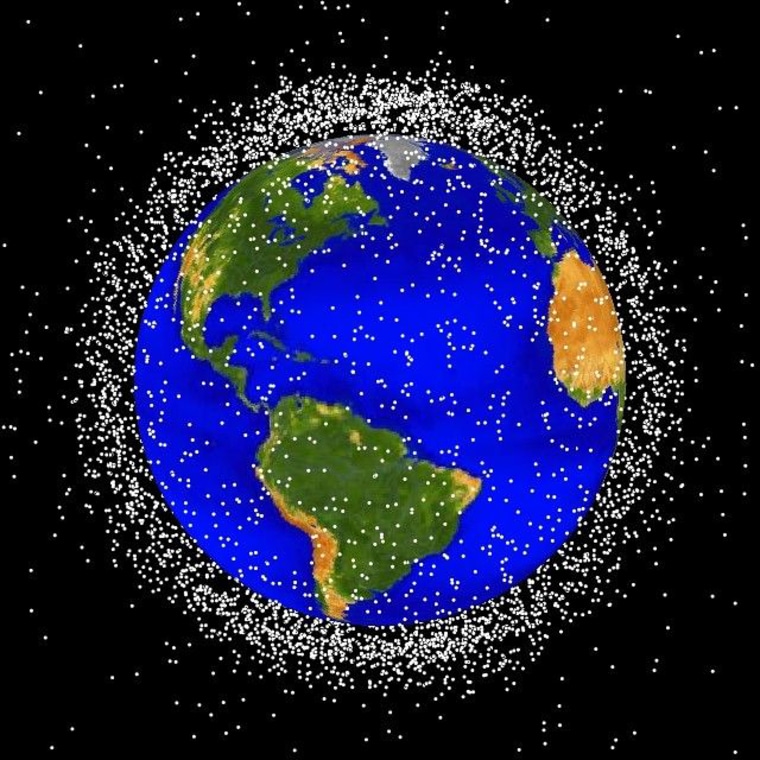More than 9,000 pieces of space debris are orbiting the Earth, a hazard that can only be expected to get worse in the next few years. And currently there's no workable and economic way to clean up the mess.
The pieces of space junk measuring 4 inches (10 centimeters) or more total about 5,500 tons, according to a report by NASA scientists J.-C. Liou and N. L. Johnson in Friday's issue of the journal Science.
Even if space launches were halted now — which will not happen — the collection of debris would continue growing as items already in orbit collide and break into more pieces, Liou said in a telephone interview.
"On the other hand, we are not claiming the sky is falling," he said, "We just need to understand what the risks are."
The most debris-crowded area is between 550 miles and 625 miles (880 to 1,000 kilometers) above the Earth, Liou said, meaning the risk is less for manned spaceflight. The international space station operates at about 250 miles (400 kilometers) altitude, and space shuttle flights tend to range between 250 miles and 375 miles (600 kilometers), he said.
But the junk can pose a risk to commercial and research flights and other space activities.
Much of the debris results from explosions of satellites, especially old upper stages left in orbit with leftover fuel and high-pressure fluids.
Russia leads the list
A 2004 NASA report identified Russia as the source of the largest number of debris items, closely followed by the United States. Other sources were France, China, India, Japan and the European Space Agency.
Even without any launches adding to the junk, the creation of new debris from collisions of material already there will exceed the amount of material removed as orbits decay and items fall back to Earth, the researchers estimated.
Only removal of existing large objects from orbit "can prevent future problems for research in and commercialization of space," they wrote.
"As of now there is no viable solution, technically and economically, to remove objects from space," Liou said. He said he hopes the report will encourage researchers to think about better ways to do this.
Are tethers cost-effective?
Tethers to slow down orbiting materials and cause them to fall back to Earth sooner could work, but attaching tethers to the space junk would be excessively expensive for the benefit gained, the researchers said.
Newly launched satellites and boosters could include engines that would direct them back to Earth, but that would require costly and complex power and control systems.
And use of ground-based lasers to disturb the orbits of satellites isn't practical because of the mass of the satellites and the amount of energy that would be needed.
"The bottom line is very simple." Liou said. "Although the risk is small, we need to pay attention to this environmental problem."
